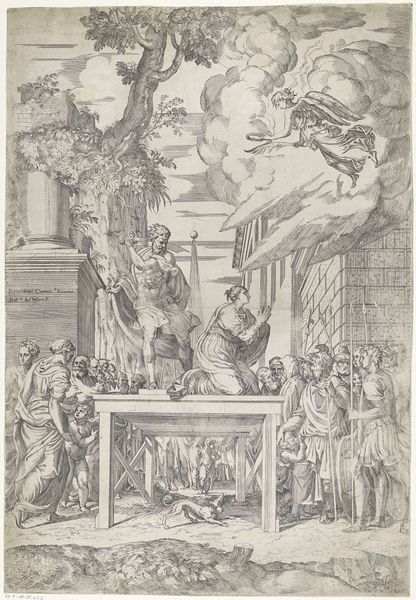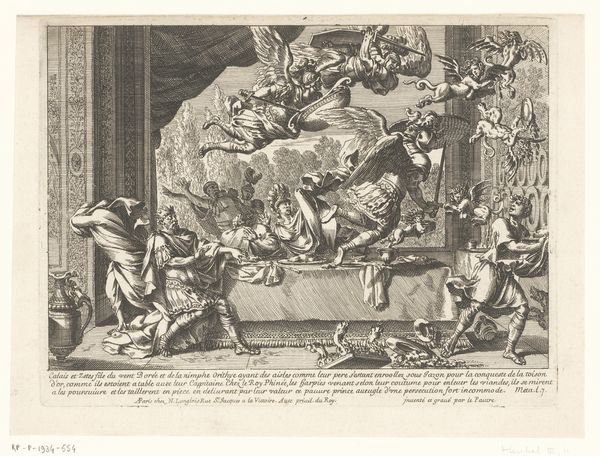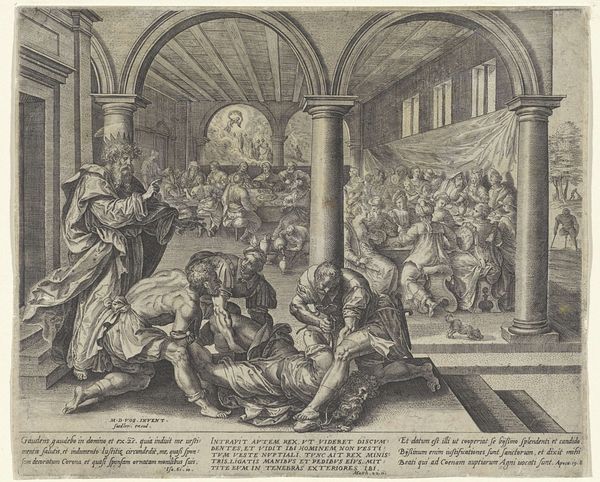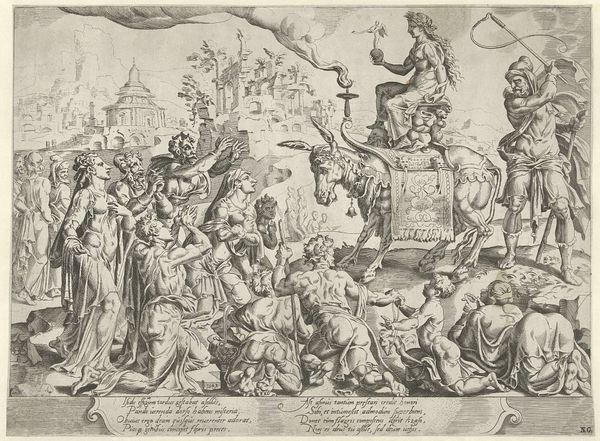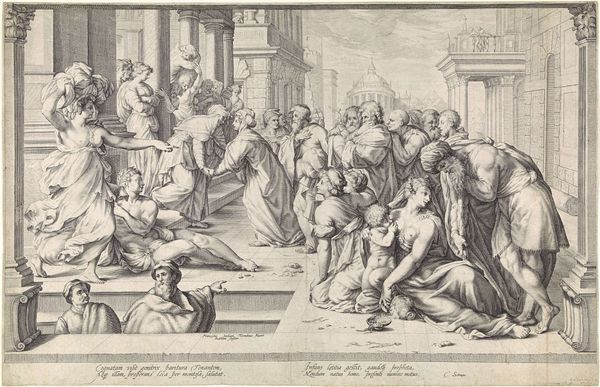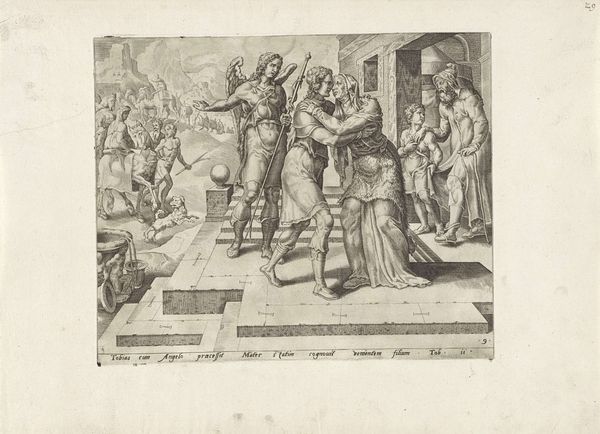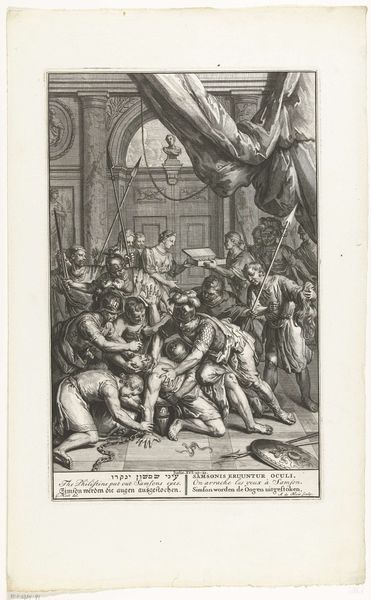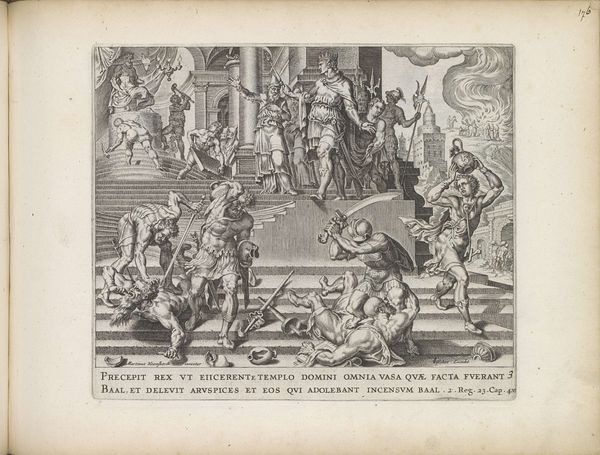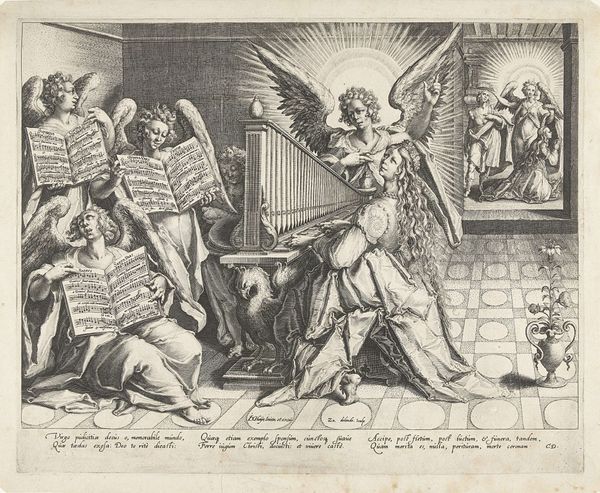
print, engraving
# print
#
figuration
#
history-painting
#
northern-renaissance
#
engraving
Dimensions: height 202 mm, width 243 mm
Copyright: Rijks Museum: Open Domain
Curator: Let’s turn our attention to "Afscheid van de aartsengel Rafaël," or "Departure of the Archangel Raphael," an engraving dating sometime between 1556 and 1633, found here at the Rijksmuseum. What's your immediate take? Editor: Well, the first thing that strikes me is the dramatic use of perspective and the clear social hierarchy presented in this small print. The figures are arranged on a monumental staircase, drawing your eye immediately. There's a real sense of power dynamics visualized in the spatial arrangement of the scene. Curator: Precisely. What interests me is the print medium itself. Engravings allowed for mass production, thus enabling broader access to visual narratives, particularly those conveying biblical or historical events. The material itself facilitates the dissemination of religious teachings and political ideologies to a wide audience beyond the elite. Editor: I see that, and I'd also like to connect this artwork to larger conversations about religious authority during this time. Consider the way the family in the foreground is prostrated, almost worshipping the departing angel, and note how this contrasts with shifts toward more personal relationships with the divine happening at the time. How does it represent anxieties related to religious figures, belief and access? Curator: That's a great observation. And thinking about process, consider the skill required to create such intricate details on a metal plate. The engraver's labor— the time, the physical effort —are essential to its function as propaganda, or art. Editor: True. The labor and the medium intersect to affect perception and belief. Looking closer at this figuration we could suggest that there is tension in the composition. Is this the artists presenting divine intervention or a form of oppression that maintains societal norms? Curator: It prompts questions, definitely. Thank you. This exploration shows how engaging with the materials and social contexts of an artwork really can deepen and maybe challenge our understanding. Editor: Agreed. Situating the print in the context of Reformation-era beliefs opens rich avenues for reflection on how identity and spirituality intersect in art.
Comments
No comments
Be the first to comment and join the conversation on the ultimate creative platform.
